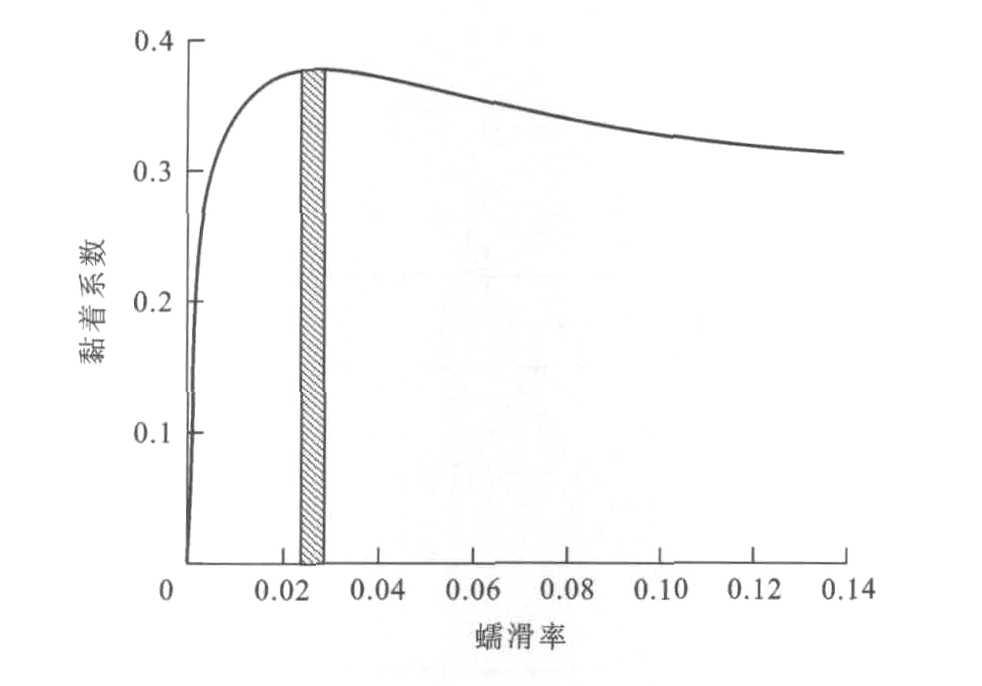-
摘要: 基于Polach大纵向蠕滑理论的轮轨接触模型, 确定了铁道车辆在制动工况下, 轮轨黏着系数达到饱和时的轮轨蠕滑率。以闸瓦压力为优化对象, 以轮轨蠕滑率为目标函数, 在SIMPACK环境下构建了考虑制动系统的车辆动力学模型。通过ARX系统辨识技术, 在SIMULINK环境下构建了轮轨蠕滑率响应的参照系统。为了使车辆模型与参照模型的蠕滑率在制动过程中保持一致, 基于MIT自适应控制技术对制动时车辆的蠕滑率响应进行了跟踪, 以实现对闸瓦压力施加方案的优化。计算结果表明: 与一般闸瓦压力施加方案比较, 优化后的闸瓦压力使轮轨最大蠕滑率下降了71.6%, 使制动结束时的车速下降了11.8%, 说明优化后的闸瓦压力不但能有效避免轮轨间的擦伤, 还能够在一定程度上缩短车辆的制动距离。Abstract: Based on the wheel/rail contact model of Polach's large creep theory, the creepage corresponding the saturated adhesion coefficient was determined in the brake condition of wagon. As block pressure was taken as the optimization objective and the creepage was taken as the objective function, vehicle dynamics model was built in SIMPACK environment under considering braking system. By ARX system identification, the reference system of creepage response was modelled in SIMULINK environment. On the purpose that the creepages of MBS model and reference model kept consistent during the brake, the creepage response was tracked by using MIT adaptive control technic, and an optimized method to apply block pressure was obtained. Compared with other ordinary methods, the optimized method decreases 71.6% of the maximal creepage and 11.8% of vehicle velocity at braking end, which can effectively eliminate wheel/rail slide and shorten the brake distance to a certain extent.
-
表 1 制动性能对比
Table 1. Comparison of brake performances
闸瓦压力函数 最大蠕滑率/% 最终车速/(m·s-1) 优化压力 FUN(t) 2.78 9.635 6 低压力(15 kN) 阶跃函数 9.79 10.776 7 高压力(25 kN) 阶跃函数 93.46 0.093 3 -
[1] 李芾, 安琪, 刘俊红, 等. 重载货车车轮温度场与应力场研究[J]. 系统仿真学报, 2010, 22(2): 344-347, 369. https://www.cnki.com.cn/Article/CJFDTOTAL-XTFZ201002019.htmLI Fu, AN Qi, LIU Jun-hong, et al. Research on tempera-ture and stress fields of heavy-haul freight car wheel[J]. Journal of System Simulation, 2010, 22(2): 344-347, 369. (in Chinese). https://www.cnki.com.cn/Article/CJFDTOTAL-XTFZ201002019.htm [2] 李芾, 傅茂海. 我国高速货车制动系统模式探讨[J]. 铁道车辆, 2001, 39(9): 7-9, 15. doi: 10.3969/j.issn.1002-7602.2001.09.003LI Fu, FU Mao-hai. Discussion about mode of braking system on high speed freight cars in our country[J]. Rolling Stock, 2001, 39(9): 7-9, 15. (in Chinese). doi: 10.3969/j.issn.1002-7602.2001.09.003 [3] VON WAGNER U, SPELSBERG-KORSPETER G. Minimal models for squealing of railway block brakes[J]. Archive of Applied Mechanics, 2011, 81(4): 503-511. doi: 10.1007/s00419-010-0422-y [4] 徐传来, 米彩盈, 李芾. 基于轴对称模型的货车车轮结构疲劳强度分析[J]. 交通运输工程学报, 2008, 8(6): 20-23. doi: 10.3321/j.issn:1671-1637.2008.06.004XU Chuan-lai, MI Cai-ying, LI Fu. Structural fatigue strength analysis of wheel for freight car base on axisymmetric model[J]. Journal of Traffic and Transportation Engineering, 2008, 8(6): 20-23. (in Chinese). doi: 10.3321/j.issn:1671-1637.2008.06.004 [5] VERMEULEN P J, JOHNSON K L. Contact of non-spherical bodies transmitting tangential forces[J]. Journal of Applied Mechanics, 1964, 31(2): 338-340. doi: 10.1115/1.3629610 [6] KALKER J J. Simplified theory of rolling contact[J]. Mechanical and Aeronautical Engineering and Shipbuilding, 1973(1): 1-10. [7] SHEN Z Y, HEDRICK J K, ELKINS J. A comparison of alternative creep-force models for rail vehicle dynamic analysis[J]. Vehicle System Dynamics, 1983, 12(1/2/3): 79-83. [8] KALKER J J. Wheel-rail rolling contact theory[J]. Wear, 1991, 144(1/2): 243-261. [9] POLACH O. Creep forces in simulations of traction vehicles running on adhesion limit[J]. Wear, 2005, 258(7/8): 992-1000. [10] 黄运华, 李芾, 付茂海, 等. 新型铁道车辆液气缓冲器动态特性[J]. 交通运输工程学报, 2005, 5(4): 1-5. doi: 10.3321/j.issn:1671-1637.2005.04.001HUANG Yun-hua, LI Fu, FU Mao-hai, et al. Dynamic characteristic of new hydro-pneumatic buffer for railway vehicle[J]. Journal of Traffic and Transportation Engineering, 2005, 5(4): 1-5. (in Chinese). doi: 10.3321/j.issn:1671-1637.2005.04.001 [11] 常崇义, 王成国, 马大炜, 等. 2万t组合列车纵向力计算研究[J]. 铁道学报, 2006, 28(2): 89-94. https://www.cnki.com.cn/Article/CJFDTOTAL-TDXB200602019.htmCHANG Chong-yi, WANG Cheng-guo, MA Da-wei, et al. Study on numerical analysis of longitudinal forces of the T20000heavy haul[J]. Journal of the China Railway Society, 2006, 28(2): 89-94. (in Chinese). https://www.cnki.com.cn/Article/CJFDTOTAL-TDXB200602019.htm [12] TB/T2403—1993, 货车高摩擦系数合成闸瓦[S].TB/T2403—1993, the compose brake shoe with high friction coefficient for the wagon[S]. (in Chinese). [13] 杨岗, 李芾. 基于LQR的高速受电弓最优半主动控制研究[J]. 铁道学报, 2011, 33(11): 34-40. doi: 10.3969/j.issn.1001-8360.2011.11.006YANG Gang, LI Fu. Semi-active control for high-speed pan-tograph based on the optimal LQR regulator[J]. Journal of the China Railway Society, 2011, 33(11): 34-40. (in Chinese). doi: 10.3969/j.issn.1001-8360.2011.11.006 -





 下载:
下载:










